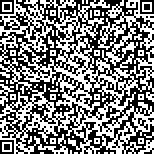| 摘要: |
| 目的 水稻是我国南方地区种植面积最大的粮食作物,准确及时地获取水稻的面积及空间分布信息对于加强农业生产管理、保障国家粮食安全具有重要意义。以往利用卫星遥感技术进行水稻分类研究中影像的红边波段类型没有确定,影响着水稻面积监测的精度和效率。方法 文章选取中国南方典型的水稻种植区——浙江省德清县为研究区,利用覆盖水稻主要生长期的5个时相(2019年5月24日、8月2日、8月17日、10月31日、11月15日)Sentinel-2卫星影像,采用随机森林算法进行水稻分类研究。分析研究区水稻及其余6种典型地物在不同波段下的反射光谱特征,采用J-M距离定量评价各时相下有无红边波段参与的各种地物光谱可分离性,比较不同红边波段下的水稻分类精度,优选水稻分类的关键时相和波段组合。结果 相较于红、绿、蓝波段,7种典型地物在红边、近红外波段光谱差异更为明显。相比于无红边波段,有红边波段参与时水稻与其余6种地物的J-M距离更大,可分离性更强。5个时相中,在8月17日(水稻拔节期)时,水稻与其他地物可分离性最大。当3个红边波段全部参与分类时,水稻与其余6种典型地物的总体分类精度最高为91.58%,Kappa系数为0.89。Sentinel-2影像参与分类的7个波段,按重要性排序是:近红外波段>红边波段2>红边波段3>红波段>红边波段1>绿波段>蓝波段。结论 该研究可为进一步提高国南方地区水稻面积监测精度与效率提供参考依据。 |
| 关键词: 水稻分类 Sentinel-2卫星 多时相 红边波段 光谱特征 |
| DOI:10.7621/cjarrp.1005-9121.20211216 |
| 分类号:S511 |
| 基金项目:中央级公益性科研院所基本科研业务费专项——基于多时相极化SAR数据的旱地作物散射机制研究(1610132019010; IARRP-2015-16) |
|
| THE ROLE OF SENTINEL-2 RED EDGE BAND IN RICE IDENTIFICATIONA CASE STUDY OF DEQING COUNTY, ZHEJIANG PROVINCE |
|
Zhang Ying1,2, Wang Zhen3, Sun Zheng1,2, Tian Tian1,2, Zeng Yan1,2, Wang Di1,2
|
|
1.Institute of Agricultural Resources and Regional Planning, Chinese Academy of Agricultural Sciences, Beijing 100081, China;2.Key Laboratory of Agri-informatics, Ministry of Agriculture and Rural Affairs, Beijing 100081, China;3.School of Chemistry and Life Science, Anshan Normal University, Anshan114007, Liaoning, China
|
| Abstract: |
| Paddy rice is one of the major staple crops which has the largest planting area in southern China. It is essential to obtain its sown acreage and spatial distribution information timely and accurately for strengthening agricultural production management and ensuring national food security. In the previous studies of paddy rice classification using remote sensing technology, the key band and acquisition time of the image has yet to be clear, which affects the accuracy and efficiency of rice area monitoring. This paper selected Deqing County in Zhejiang province, a typical rice-growing area in southern China, as the study area. The paddy rice was extracted by random forest algorithm using 5 Sentinel-2 satellite images (24th, May; 2nd, August; 17th, August; 31th, October and 15th, November, 2019)covering the main growing period of paddy rice. The reflectance spectral characteristics of rice under different bands in the study area were analyzed. J-M distance was used to quantitatively evaluate the spectral separability of various ground objects with or without red-edge bands in each time phase. The results were listed as follows. Compared with the red, green, and blue bands, the spectral differences of the seven typical objects in the red edge and near-infrared bands were more obvious.When the red edge band was involved, the J-M distance between rice and the other six ground objects was larger, and the separability was stronger. Among the five phases, the separation of rice from other ground objects was the highest on August 17 (rice jointing stage). When all the three red-edge bands were participate the classification, the overall classification accuracy was the highest (91.58%), and the Kappa coefficient was 0.89.According to the importance, the seven bands involved in the classification can be ranked in order as follows: near-infrared band, red edge band 2, red edge band 3, red band, red edge band 1, green band and blue band.So, this study can provide reference for further improving the accuracy and efficiency of rice area monitoring in southern China. |
| Key words: rice classification sentinel-2 imageries multi-temporal red edge spectral features |

